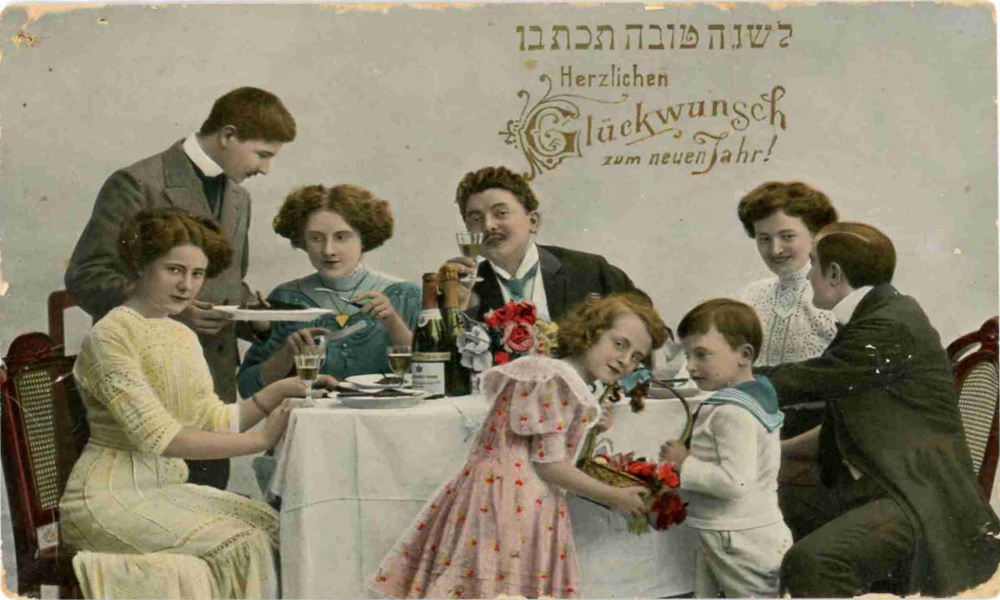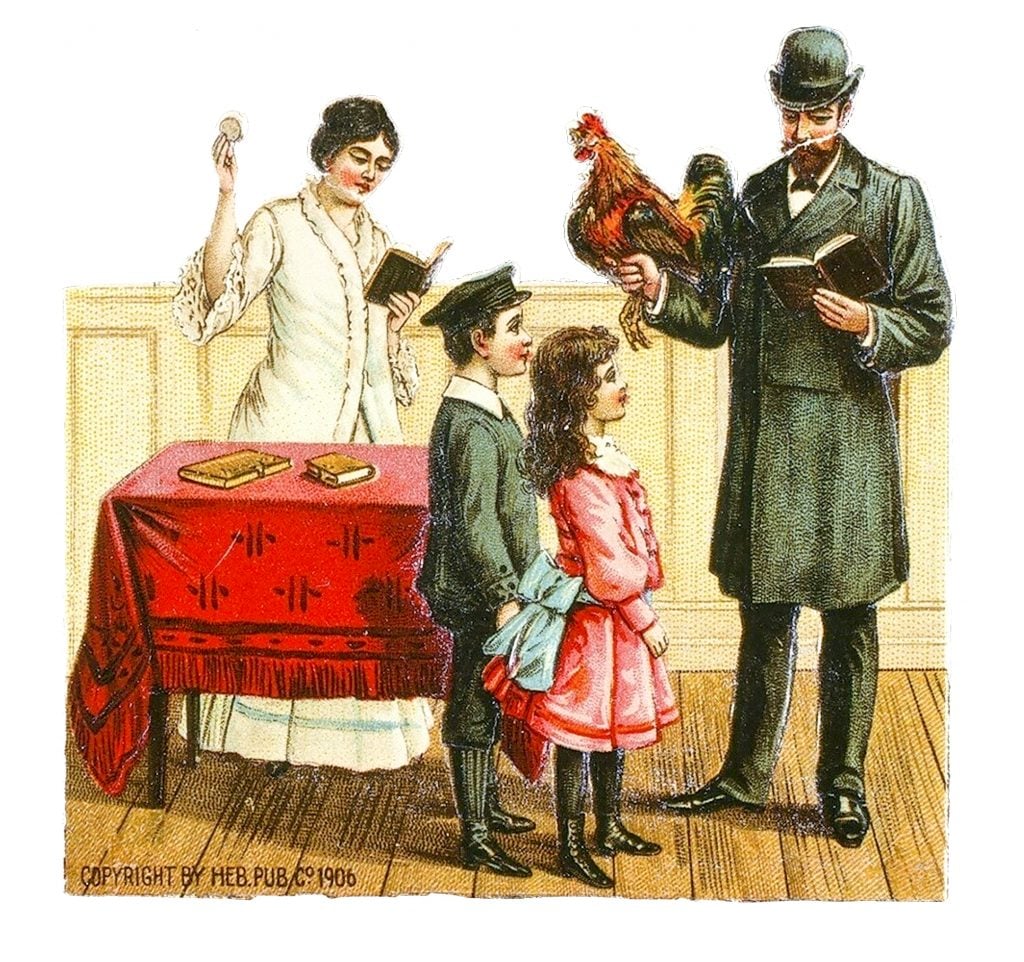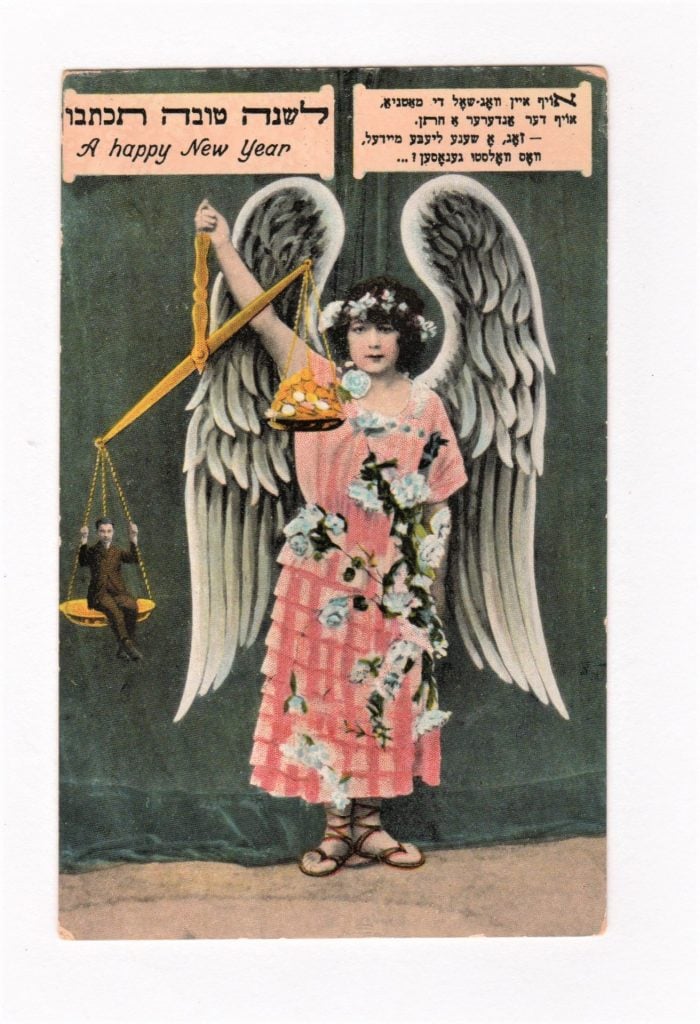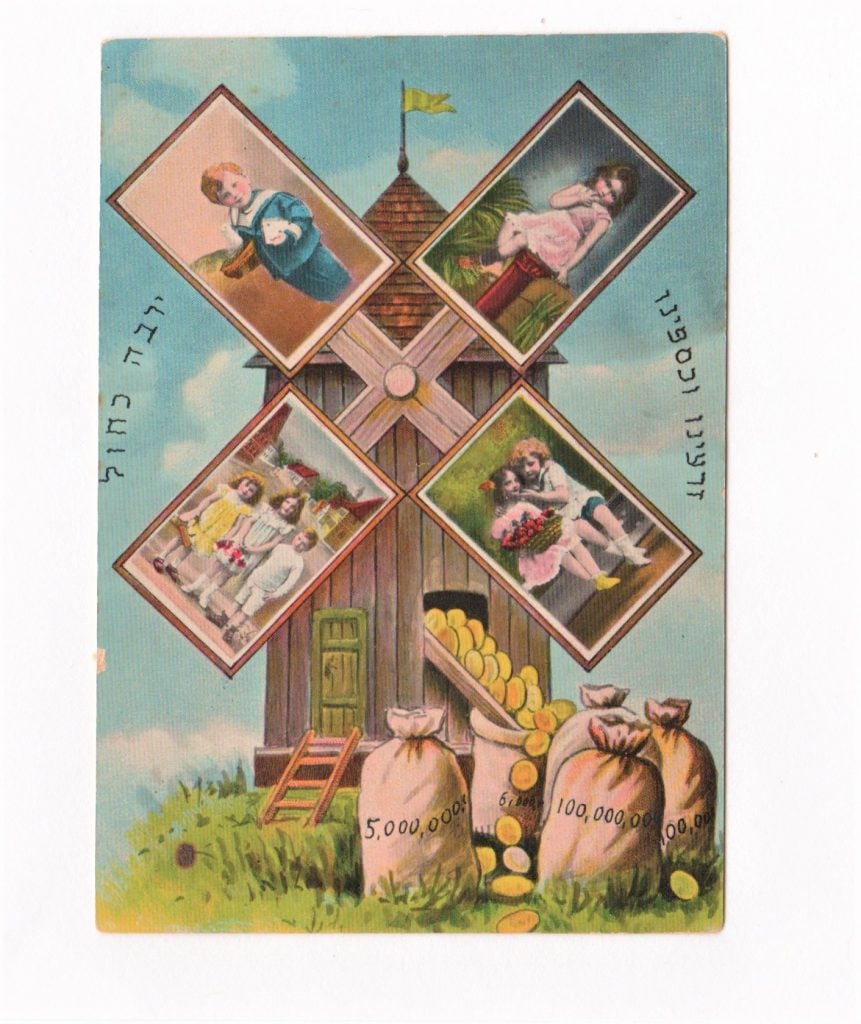Shana Tova in the Mail: A Collector’s Vintage Jewish New Year Cards

“The tradition of sending out greeting cards at the start of the Jewish month of Elul probably dates to the 16th century,” says Karen Davis, who recently published a book drawn from her collection of some 225 vintage Jewish New Year cards under the title Images of Our Past. The use of commercially printed cards, however, dates to the late 19th century, when they began to reflect the status and changing conditions of Jews in different countries. Coming mainly from Eastern Europe, England, the United States and Israel, these cards open a window on how Jews used to live and celebrate.
The cards in Davis’s collection cover a wide range of themes and sentiments, some traditional, some surprising. From Victorian die-cut cards to early 20th-century postcards from Germany, Poland and America, from cards made and sent after World War II by people from displaced persons camps to cards created in Israel, the collection is an intriguing evocation of past times.
Davis, a freelance journalist and retired film festival director who lives in West Palm Beach, Florida, has spent decades amassing vintage holiday cards dating back to the 1880s. Growing up in Manhattan’s Washington Heights, she recalls her mother ordering engraved New Year cards and festooning the living room with the ones received from family and friends. Davis started collecting cards and postcards after moving to Florida; she felt drawn to exploring the community’s past and particularly its Jewish past, since everything around her seemed so new. She soon began collecting more widely and became enamored of the glimpses the cards afforded of vanished eras and customs, together with enduring values (she notes, for example, that many of the cards emphasize children and family happiness over monetary wealth). Nowadays, she mourns the relative decline of paper cards sent through the mail.
The selections in the book, eight of which are featured below, are clever and insightful, enhanced by the collector’s distinctive voice in the captions.
Captions below adapted from Images of Our Past: Vintage Jewish New Year Cards from The Collection of Karen R. Davis (Copyright Karen Davis 2023). The book is available for purchase at NanasReserve.etsy.com.

Copyright by Hebrew Publishing Company, 1906
A family prepares to participate in the ancient Kapparot atonement ritual performed at the start of Yom Kippur. During the ritual, a living rooster or hen is swung three times over a person’s head while they recite the following prayer: “This is my exchange; this is my substitute; this is my atonement.” Some Hasidic Jews still practice this custom today.

Angels play an important role in the Torah. An angel, or malach, a messenger of God, for instance, appears to Abraham as he is about to sacrifice his son Isaac. On this card, an angel uses a scale to weigh a man against a pile of gold. She asks in Yiddish: “On the one side of the scale a fortune, on the other a bridegroom. Tell me, dear girl/ What is your desire?”

Jewish New Year postcard with a windmill image expressing the sentiment that children are the source of wealth. The texts are from the hymn following the recitation of the Havdalah at the end of Shabbat: “May our seed [future generations] and earnings multiply like the sands [of the seashore].” The card conveys the idea that true prosperity is found in children, not just in money.

The author’s caption of this scene of a family at a Shabbat dinner cleverly points out that “neither the photographer, the printer, the publisher nor the models in this card could possibly have been Jewish, since no Jewish male at the turn of the century would ever have gotten up to serve the meal.” Davis notes that the servers were always women, adding that the card “was meant for the German-Jewish market in Germany.” The formal greeting in German translates as “Cordial congratulations for the New Year.” The Hebrew is the traditional “May you be inscribed for a good New Year.”

Telephones were invented in 1876. By 1910 there were 5.8 million phones in the United States. The text reads: “Hello/ Who is calling?/This is the old year/ A good year to you, grandma/ And a good year to you, grandpa.”

Aviation is one of the stranger themes for New Year cards. This fanciful card combines photography and illustration in portraying the most up-to-date technology of the day, the monoplane. Message reads: “The flying machine carries us quickly/ And it dizzies our sight/ Tell me, is that due to flying/Or to our happy life?” The flag says, “For a good [happy] New Year.” “The cozy couple,” the caption points out, “have no trouble keeping their hats on their heads as they fly through the clouds.”

This whimsical blank check is for 365 days of health, wealth and happiness drawn on the Bank of Heaven. The image of a steamer in front of the Williamsburg Bridge and the Jewish symbols indicate that this card was being marketed to immigrants. Traditional Rosh Hashanah greetings wished that the recipient be written and sealed in the Book of Life for a good year. “Good” can have a number of connotations. Perhaps the wish for health grew out of the period of the Spanish flu epidemic, and the wish for financial prosperity out of tough times.

Die-cut. Copyright Hebrew Publishing Company, 1903. The American eagle and the double-headed Russian eagle soar above the scene of Americanized Jews, with arms outstretched, welcoming their immigrant Russian brethren.

One thought on “Shana Tova in the Mail: A Collector’s Vintage Jewish New Year Cards”
Shanah Tova! I loved this article.
We have one from 1933.